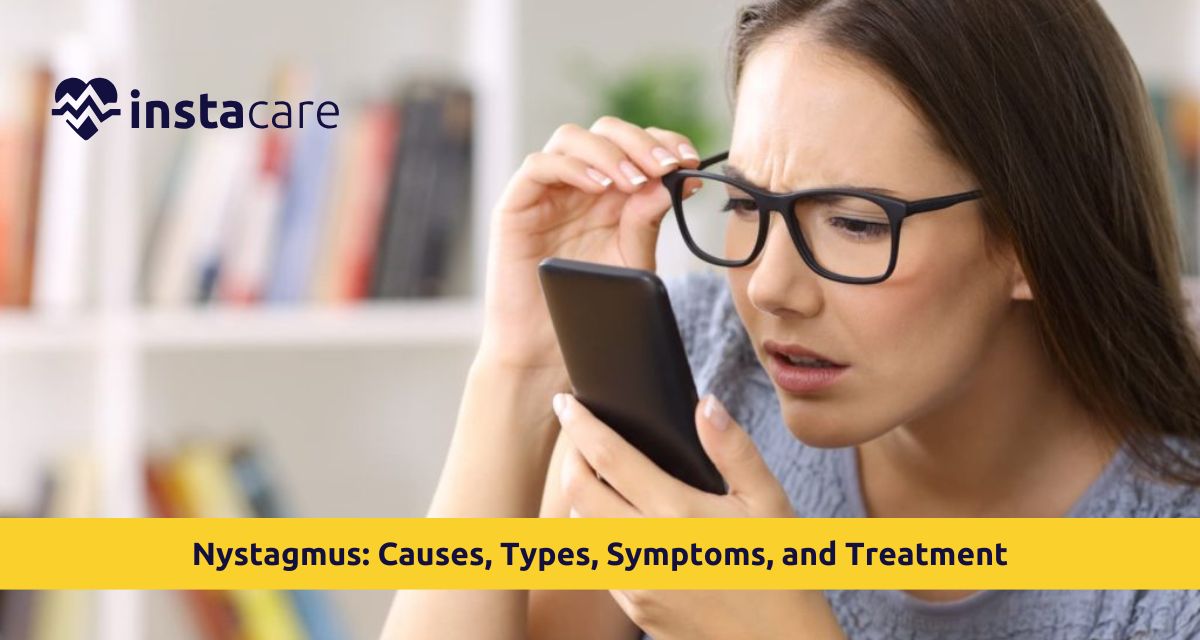What is Nystagmus?
Nystagmus is a type of disorder that affects the eyes where repeated rotary, vertical, or horizontal movement of the eyes occurs without control. This movement causes impaired vision, loss of depth perception, as well as damage to balance.
Nystagmus can be found in any age group of humans but is commonly diagnosed most frequently in children as well as in adults owing to a myriad of reasons. In order to have an idea about etiology of nystagmus, types, and treatment, it is necessary for proper healing and improvement in quality of life.
Why does Nystagmus occur?
Etiology of nystagmus is based on nystagmus being present at birth or acquired nystagmus after birth. The Nystagmus causes and risk factors of some of the most prevalent nystagmus are:
- Genetic etiology: Congenital nystagmus in this case has hereditary origins because of inherited characteristics that influence eyes' or brain's functioning.
- Inner ear disease: Meniere's disease will impair equilibrium and cause nystagmus.
- Neurological disease: Brain tumor, stroke, and multiple sclerosis will influence brain regulation of eye movement.
- Head trauma: Head trauma has the ability to influence vestibular apparatus or brain pathways for vision.
- Alcohol and drug abuse: Certain drugs cause nystagmus for a short duration of time by influencing the transmission of the central nervous system.
- Drugs: Sedatives, anti-convulsants, or anti-seizure medication are some of the medication that is a side effect of nystagmus.
Types of Nystagmus
Nystagmus is classified based on etiology, direction, and onset. The most common types of nystagmus are:
Congenital Nystagmus
Infantile nystagmus is another term for this one, which begins in infancy or at birth during the first months of life. It's fixed and horizontal in movement. Those who have congenital nystagmus don't even realize their vision is unstable because their brain learns to balance out the movement.
Acquired Nystagmus
This type occurs later in life and is typically a sign of an underlying disease, e.g., multiple sclerosis, vestibular injury, or head injury. The nystagmus is more apparent and disruptive than in nystagmus congenita.
Manifest Nystagmus
Eye movement always present, with or without sight or position of fixation.
Latent Nystagmus
Not visible except on covering one eye, frequently encountered in childhood eye muscle imbalance.
Vestibular Nystagmus
Due to balance organ or inner ear faults, usually with accompaniment of vertigo.
Gaze-Evoked Nystagmus
Effects on fixation in one direction, usually due to drug effect or neurological illness.
Some Important Nystagmus Symptoms
Most striking Nystagmus symptoms is spontaneous eye movement. Other nystagmus and associated diseases symptoms are:
- Blurred or trembly vision
- Cannot fix objects
- Depth perception affected
- Photophobia
- Dizziness or nystagmus and vertigo
- Head-tilting or head-rotating to achieve a "null point" of minimum motion
- Oscillopsia (sensory perception of world movement)
Clinical presentation in children's nystagmus is more subtle to detect since they adapt to it very easily but there are visual developmental delays or abnormal head posturing. Nystagmus in adults, abrupt onset and spontaneous remission of symptoms and associated with balance dysfunction or other neurologic impairment.
Diagnosis of Nystagmus
Nystagmus diagnosis is clinical evaluation and testing. Eye physicians can utilize:
- Ophthalmological testing: Sensation of the movements and positions of the eyes.
- Neurological testing: Identification of the main pathology of the brain or the nerve.
- Electronystagmography (ENG) or Videonystagmography (VNG): Recording of spontaneous movement of the eyes to categorize them and identify the etiology.
- MRI or CT scan: Identification of the structural disease of the inner ear or brain.
- Blood tests: Infection, vitamin deficiency, or metabolic disease as the cause of the symptoms.
Treatment Options of Nystagmus
Nystagmus treatment varies with cause, degree, and type. There is no single "cure," but many techniques that improve symptoms and vision function:
Corrective Lenses
Contact lenses or glasses can improve quality of vision, but cannot stop eye movements.
Medications
There are some medications for nystagmus such as gabapentin or memantine that will be useful in acquired nystagmus. Treating the underlying cause (e.g., medication for vertigo) also treats the symptom.
Surgical Treatment
Surgical intervention to alter the position of the eye can potentially allow patients to be able to keep their head in a more comfortable position.
Cognitive Behavioral Therapy (CBT)
Where stress or anxiety precipitates nystagmus or enhances its symptoms, cognitive behavior therapy for nystagmus will also sometimes treat the emotional impact as well.
Vision Therapy
Physical exercise improves coordination and concentration.
Treatment of Underlying Conditions
Treatment for the underlying condition like vestibular disorder, vitamin deficiency, or neurological disease decreases symptoms by a very significant percentage further.
Nystagmus Relief in Adults & Children
The most common What causes nystagmus in adult are head trauma, infection of the ear, or neurological illness. Sudden onset with
headache, weakness, or slurred speech must be addressed immediately. Early treatment improves the possibility of the disease remaining under good control.
Most Nystagmus in children and infants is congenital. Parents will have some compromise of head position, object following, or eye tremor. Supportive therapy in the form of low vision aids and formal vision testing are required even if children accommodate within normal limits.
Nystagmus and Conditions Associated with It
Nystagmus is typically associated with other conditions:
- Oscillopsia and nystagmus – Widening of sense of movement in the direction of gaze.
- Nystagmus and vertigo – Vestibular dysfunction is prevalent.
- Paradoxical head posture – To reduce eye movement and enhance vision.
Nystagmus Prognosis and Prevention
Nystagmus prognosis and prevention is unpredictable. Congenital nystagmus is usually permanent lifelong, and acquired nystagmus can be treated to be optimised. Prevention in every case is not achievable but management of risk factors like ear infection, head trauma, and chronic disease might decrease the likelihood of developing nystagmus.
For congenital conditions, there will be adaptation with early diagnosis and supportive management. For acquired conditions, the underlying cause for them should be addressed at earliest.
Living with Nystagmus
Adaptation to nystagmus is difficult, but remember the following ideas:
- Read large-print books or an e-reader with variable font sizes.
- Increase light at home to decrease visual effort.
- Decrease glare through tinted spectacles.
- Practice head position skills to locate your "null point."
- Participate in support groups to receive emotional and tangible support.
Conclusion
Eye movement disorders such as nystagmus are a consequence of congenital disorders, acquired neurological disorders, and illness. Early treatment and diagnosis cannot cure the disorder, yet early diagnosis and treatment, coupled with ideal supports, can aid in symptom control and visual stability. Therefore, if medical treatment is expedited, quality of life can be improved in most cases.
Please book an appointment with the
best Eye Specialist in Lahore, Karachi, Islamabad, and all major cities of Pakistan through
InstaCare, or call our helpline at 03171777509 to find the verified doctor for your disease.

